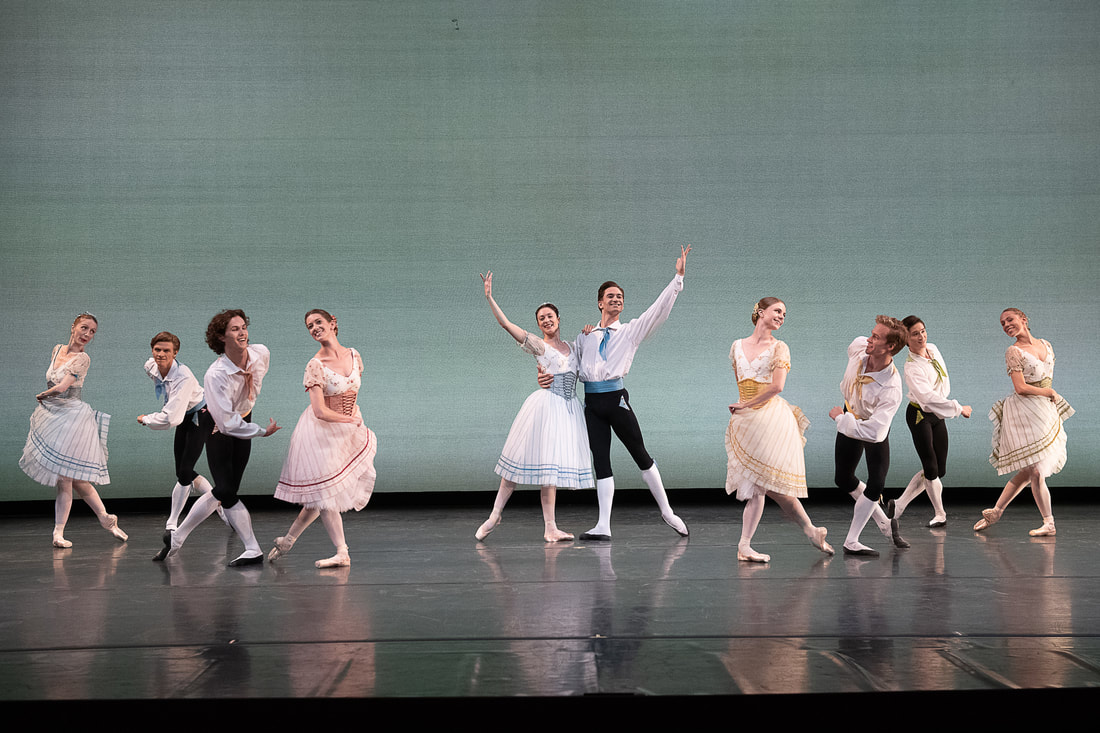|
Principals and soloists of the Royal Danish Ballet made a triumphal return to Jacob's Pillow. The last showing of the Royal Danish Ballet performance at Jacob’s Pillow was disastrous. At the time in 2007, I wrote in The Daily Gazette that it was “humdrum” and “awful.”
But at the bottom of the review, I noted that Dane Nikolaj Hubbe was retiring from New York City Ballet and taking over the historic company. I concluded Hubbe gave me hope “that the Danes can bounce back to prominence.” And they have. As the featured company in the opening week at Jacob’s Pillow, the company looked sparkling, crisp and dashing. I’m bowled over by the transformation and relieved that one of the most important and oldest companies in the world has regained its footing on the world stage. And to prove it, the principals and soloists from the company that dates back to 1748, danced a ballet’s greatest hits program – pas de deux from not only the Danish tradition, but also famed love duets from “Swan Lake” and “Giselle.” Then they topped it off with a vigorous rendering of “Napoli.” I couldn’t stop smiling. There is a risk in a program primarily comprised of pas de deux because it can become monotonous. Not so here. Each one, from the pas de deux from “Dvorak” to that of “La Sylphide” opened the imagination. The feeling of each was distinctive and that came from the marvelous dancers who captured the persona of the characters behind the stories and the steps. The most surprising was the “Black Swan” pas de deux with Holly Jean Dorger and Jonathan Chmelensky. The Danes proved that they could not only perform the light and pleasant August Bournonville ballets, which the company is known for, but the dramatic and flashy Russian ones too. Dorger was sharp as the seductress, trapping the unsuspecting Prince into her deceptive web. Chmelensky, as the Prince, soared through the air again and again, begging for her love by the duet’s end. The dancers have not betrayed their traditions, however. The fleet and complicated footwork that the Danes are known for is preserved. They simply primed it with an irrepressible showmanship. Ida Praetorius and Andreas Kaas exemplify this new boldness in the duet from Bournonville’s “The Kermesse in Bruges.” The courteous Danish style was vividly there, but turned up. I never seen Danish legs, that used to be modestly held at hip level, fly so high. The souped up tradition was most evident in “Napoli.” It went from a genial gathering of friends in the town square to riotous, competitive romp with a tarantella that was irresistible and infectious. I thank the ballet gods for leading Hubbe back to the company of his youth.
1 Comment
6/22/2018 08:49:56 am
Beautifully performed greatest hits pas de deux? Sounds to me like the best ballet evening ever! I was happy to read about it.
Reply
Leave a Reply. |
Wendy
|

 RSS Feed
RSS Feed
